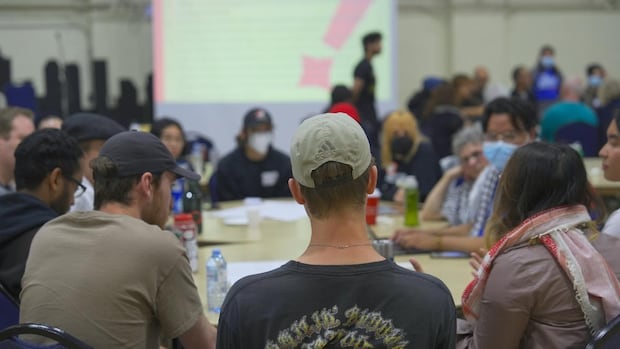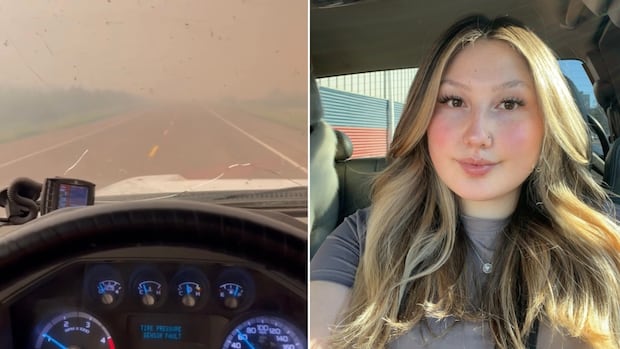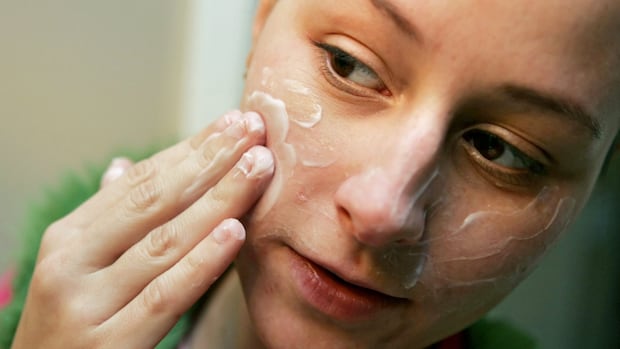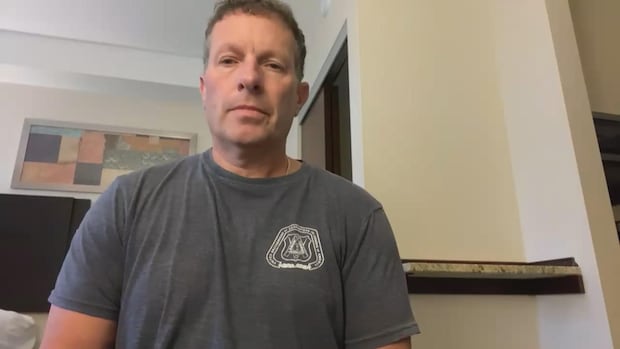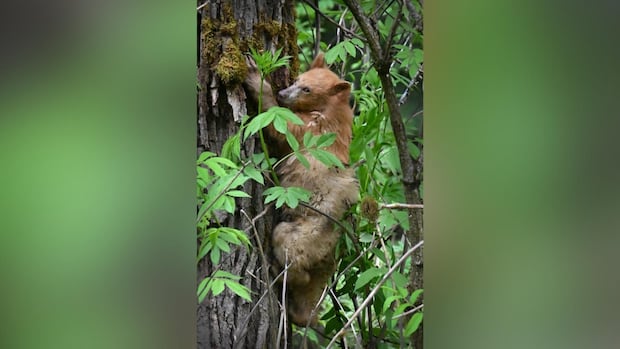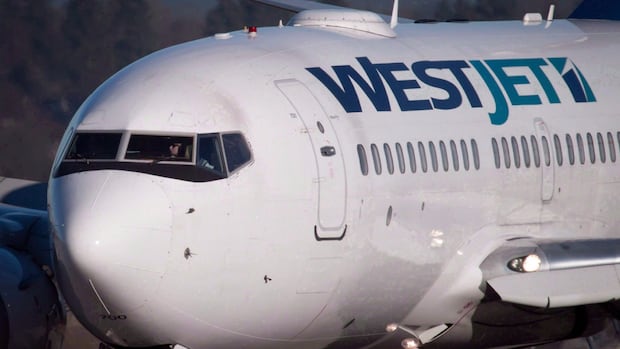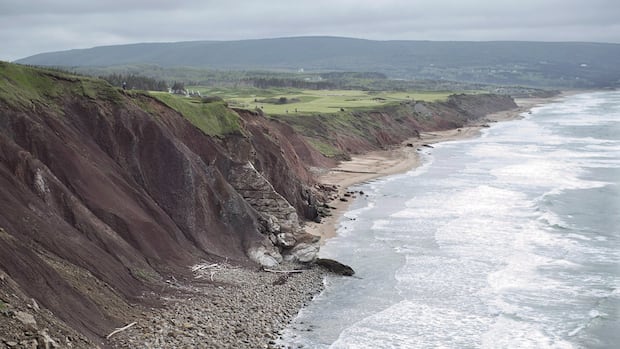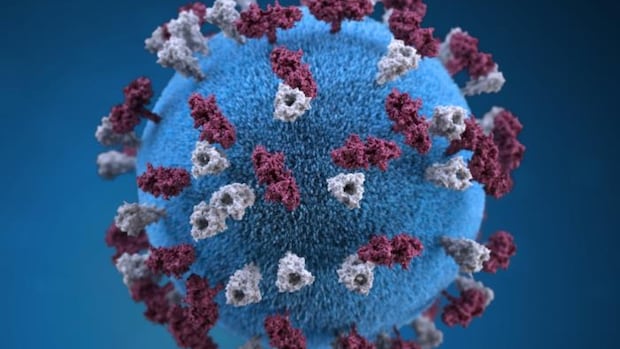Shelley Lindaas has long dreamed of seeing a Kermode bear cub in person.
An amateur wildlife photographer based in Terrace, near B.C.'s north coast, she spends much of her free time hiking the backwoods and camped out with camera equipment in one spot for hours at a time, waiting to catch a glimpse.
But her goal of seeing the rare, light-furred variant of a black bear came almost accidentally this year as she was driving along the highway and spotted the cub, with its family, just off the road.
"They were sitting right on the highway," Lindaas said. "I get unusually excited when I see any wildlife ... but I was off the charts excited."
 The Kermode cub, along with two siblings and a sow, has been along a highway near Terrace, B.C. In this still image from a video taken by Joy Buscagan, drivers slow down but don't stop once they see the bear. Buscagan's video lasts less than 50 seconds before driving on, a technique encouraged by conservation officers. (Joy Buscagan)
The Kermode cub, along with two siblings and a sow, has been along a highway near Terrace, B.C. In this still image from a video taken by Joy Buscagan, drivers slow down but don't stop once they see the bear. Buscagan's video lasts less than 50 seconds before driving on, a technique encouraged by conservation officers. (Joy Buscagan)Kermodes, also known as spirit bears, are a subset of black bears that live in B.C.'s North and Central Coast regions. Their unique colouring occurs due to a recessive gene passed on through black bears. The official animal of British Columbia, a recent survey estimated their population to be fewer than 500, making them one of the rarest bear sightings in the world.
For generations, First Nations limited information about the bears out of concern they would be targeted for hunting and trapping, but in more recent years some groups have taken to highlighting their existence as a way of raising wider awareness about the need for ecosystem management on B.C.'s coast.
And that debate, about how best to handle it when an animal many dream of seeing is discovered, is playing out in miniature in Terrace where many are celebrating sightings of the cub while others worry posting photos and video of it will put the animal at risk by drawing too many people to the region.
Concerns over habituationLindaas, who grew up in the northwest and whose father was a hunter and trapper, didn't see her first Kermode until 2023, after years of exploration in the region. Since then, she's managed to track a few bears and document them through her Instagram account and a calendar she sells locally.
But, she said, she doesn't generally share her photos until after she's confident the bears have moved away from the area she spotted them in.
"I always wait until August before I post pictures, and I get bombarded by other wildlife photographers about where I took them," she said.
"If I have friends in the area, I'll tell them, but I try to keep it quiet."
 A Kermode or spirit bear eats berries at an undisclosed location in northwest B.C. in 2024. (Shelley Lindaas)
A Kermode or spirit bear eats berries at an undisclosed location in northwest B.C. in 2024. (Shelley Lindaas)She made an exception in posting the photo of the cub because there had already been so many other sightings and posts on social media that it seemed "everyone knew."
Indeed, a search through local Facebook groups reveals multiple photos and videos of the bear, along with its mother and two black bear siblings.
Along with those posts are comments from locals worried about too many people getting too close to the bear, a concern that has been amplified by the conservation officer service, which put out a message urging people to give the bears space and not do anything — such as feeding — that might acclimatize them to human contact.
"It's natural for people to be curious if they see a white bear on the side of the road, I understand," said Sgt. Micah Kneller of the Terrace conservation officer service. "We just encourage people that if they see the bear, or bears in general ... they move on fairly quickly."
He said some of the most concerning behaviour would be rolling down windows to make noise to try and get the bear's attention, as well as anything that might lure them toward the highway or other people.
 A Kermode or spirit bear with its black bear cub in northwest B.C. in 2023. (Shelley Lindaas)
A Kermode or spirit bear with its black bear cub in northwest B.C. in 2023. (Shelley Lindaas)He said while there'd been no reports of people feeding the bears yet, he worries it will become a greater risk as more tourists less familiar with wildlife behaviour came to the region over the summer.
"Inevitably some traveler ends up throwing food toward some of these bears so they can get a better picture of them," he said.
Even without the food, he said, frequent vehicle stops would get the bears used to traffic, leading to a greater likelihood to them getting hit or, in a "worst-case scenario," crawling onto vehicles, forcing them to be killed by the conservation officer service.
Hundreds of black bears killed annuallyProvincial statistics show hundreds of black bears are destroyed each year as they are deemed a risk to humans, with more than 8,000 over a 14-year span from 2011 to 2024. Statistics are not kept specifically for Kermodes, but hunting the rare white bears is illegal, with penalties of up to $100,000 and/or one year in prison.
Lindaas said it is important for members of the public to understand that although the photos she takes look like she's up close and personal with the bears, she uses specialized equipment that lets her zoom in and enhance images from great distances.
"It's a heavy, heavy edit," she said. "It's really frustrating when you're giving them a respectful distance but then people pull up, like, two feet from it with their iPhone and they're leaning out the window, stressing the animal out."
She encouraged people to get familiar with animal behaviour and follow the advice of wildlife officials to stay far away when encountering any wild animals.
"You're enjoying the animals [when you get up close] but what you don't realizing is you're now causing them to maybe die because you're training them to get used to people."


